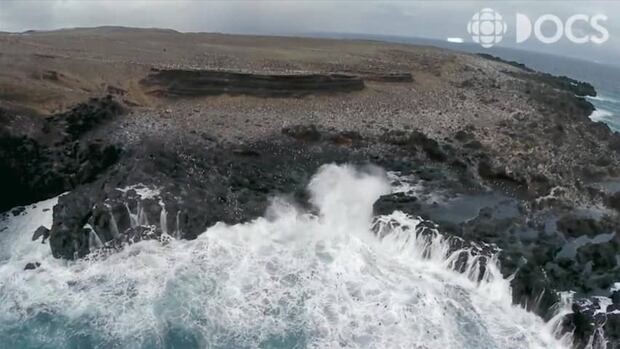A jaw-dropping trip around the world celebrates the spectacular diversity of Earth in one day
The sequel to BBC's hit documentary Earth, One Amazing Day tracks the sun from the highest mountains to the remotest islands over the course of a single day. It features 38 wild species from 22 countries and took more than 142 days to film.
It's a jaw-dropping trip around the world featuring rare and unseen moments from the wild in such exquisite detail that some viewers thought they were CGI. The footage, some of which was re-cut from the groundbreaking BBC series Planet Earth 2, is the real thing. Advances in camera technology are now able to record more detail explain producers Michael Gunton and Emily Napper to Gizmodo. "Mother Nature is much better at making animals than any CGI artist - we just haven't had the ability to show this level of detail until now."
Behold a few of the most breathtaking scenes featured in the documentary.
Sloth springs into action for sex
This pygmy three-toed sloth lives the ultimate life of leisure. He spends most of his time hanging upside down in the red mangrove forests on the island of Escudo, off the coast of Panama. At high noon, it's hot, and he's almost comatose.
These sloths are critically endangered; there are only a few hundred left in the world. So there's one thing that can rouse him into action: the call of a female. He plunks into the water on a search for sex.
Although sloths are ungainly on land, they are surprisingly good swimmers. But there's no happy ending here. This awkward male is unlucky in love this time.
These penguins have the toughest commute on Earth
Zavodovski Island, located halfway between the southern tip of South America and Antarctica, is just nine square miles in size but it's home to one of the largest penguin colonies on earth. About 1.5 million chinstrap penguins live here on the rocky shores only a few hundred metres from an active volcano, Mount Curry.
It's a penguin paradise; the volcano's slopes are warm with minimal ice, and the island is surrounded by food. But rough winds and high swells beat against the shores day and night. To feed their chicks, penguin parents take turns braving the icy waters and pounding waves to make the journey between home and their hunting grounds offshore. It's got to be the toughest commute on earth.
Tiny hummingbirds compete with bees for sweets
Tiny racquet-tailed hummingbirds, about the size of a human thumb, thrive in the rainforests of Ecuador. But being that small and moving that fast comes at a cost. These birds have a super fast metabolism and live in a perpetual state of near starvation. They need to fuel up on nectar over a thousand times a day just to survive.
But there's serious competition for food. These bees are hungry, too, and like to feed on the same sweet flowers. And they can be aggressive. A sting close to the hummingbird's heart could be fatal.
Today, the hummingbirds catch a lucky break. Torrential rains above the canopy fill the forest below with raindrops. Bees can't swim in the rain leaving the hummingbirds to feast alone.
Watch more Earth: One Amazing Day on CBC Gem.


